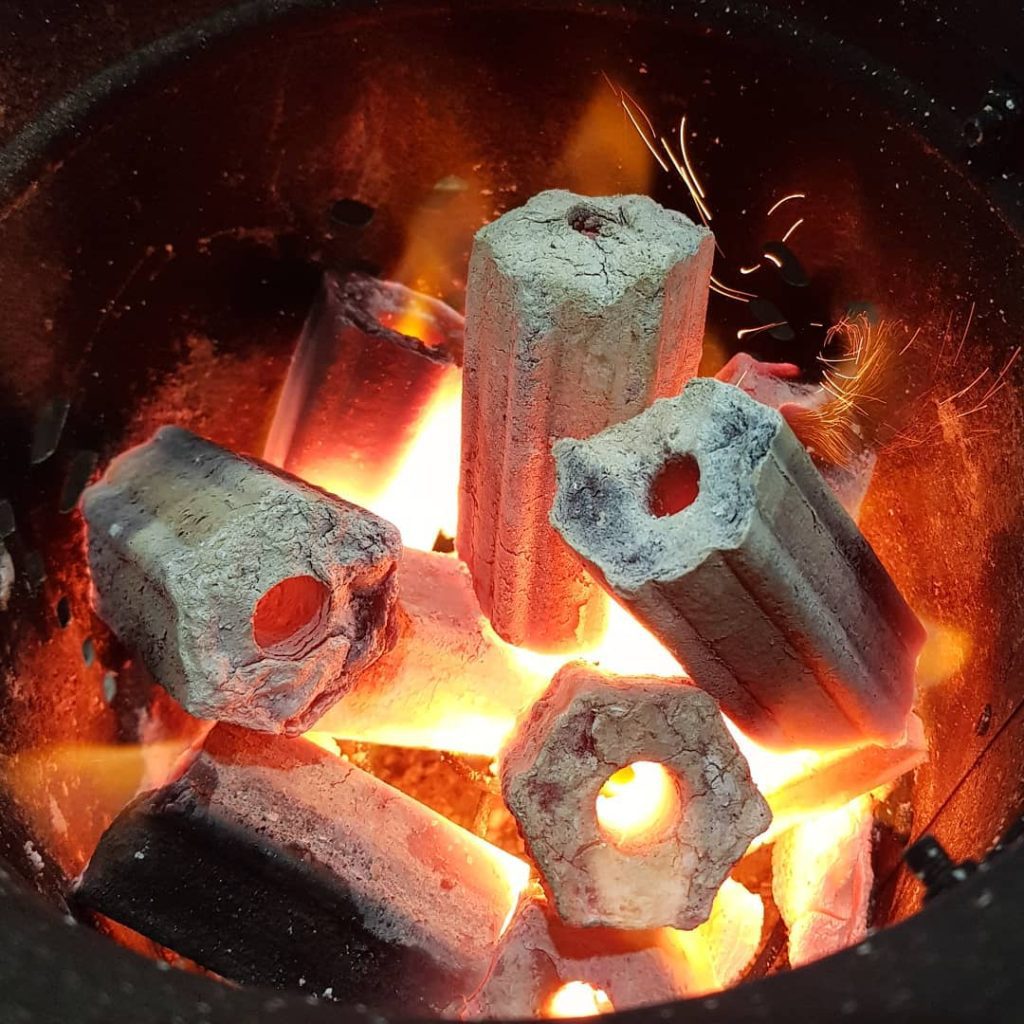

Not All Charcoal is Created Equal
Even if you’re meticulous in selecting your ingredients, have you ever assumed that all charcoal is the same? In reality, choosing the right charcoal is just as crucial as selecting the right ingredients.
Low-quality charcoal burns weakly and unevenly, and using poorly made or overly flammable charcoal can compromise the flavor of your food. That’s why using the right charcoal can dramatically enhance your cooking experience and your customer’s satisfaction.
How to Identify Good Sawdust Charcoal
1. Stable Heat
Good charcoal provides consistent heat over a long period of time. This ensures that food cooks evenly without burning on one side. Stable heat also helps improve fuel efficiency and cooking time.
2. No Visible Flame
High-quality charcoal does not produce large flames. Instead, it burns slowly with a steady red glow. Excessive flames often indicate high moisture or chemical content, which can alter the taste of food and pose safety risks.
3. No Popping or Sparks
Popping or sparking when burning charcoal can be dangerous and often signals poor quality. Quality charcoal has been properly dried and compressed, eliminating excess moisture that causes such reactions during burning.
4. Less Ash
Premium charcoal produces minimal ash after burning. This not only keeps the cooking process cleaner but also reflects how efficiently the charcoal burns with minimal residue.
5. Sharp Appearance and Heavier Feel
Physically, good charcoal tends to have a solid, dense structure, sharp edges, and feels heavier when lifted. These characteristics indicate that the charcoal is well-compressed and won’t easily break during use.
Good Charcoal vs Bad Charcoal
✅ Stable heat – Provides consistent and even heat for a long time.
✅ No visible flames – Burns steadily with a glowing ember, not with open flames.
✅ Even cooking results – Helps ingredients cook uniformly without burning.
✅ No explosions or sparks – Burns safely without popping or flare-ups.
✅ Less ash – Leaves minimal residue after burning, indicating efficient combustion.
✅ Sharp appearance and heavy feel – Solid, dense, and not easily breakable.
❌ Easily pops and sparks – Produces flying sparks, smoke, and flames when lit.
❌ Unpleasant odor & crumbles easily – Indicates poor carbonization or impurities.
❌ Reddish color – Shows the charcoal hasn’t been fully carbonized.
❌ Sounds like wood when tapped – Suggests it’s not fully processed into charcoal.
❌ Sticky or tar-like surface – A sign of leftover resin or chemical content.
❌ Emits smoke & jumps when burned – High moisture content causes unstable burning.
❌ Cracked surface – Means the charcoal is fragile and poorly compressed.